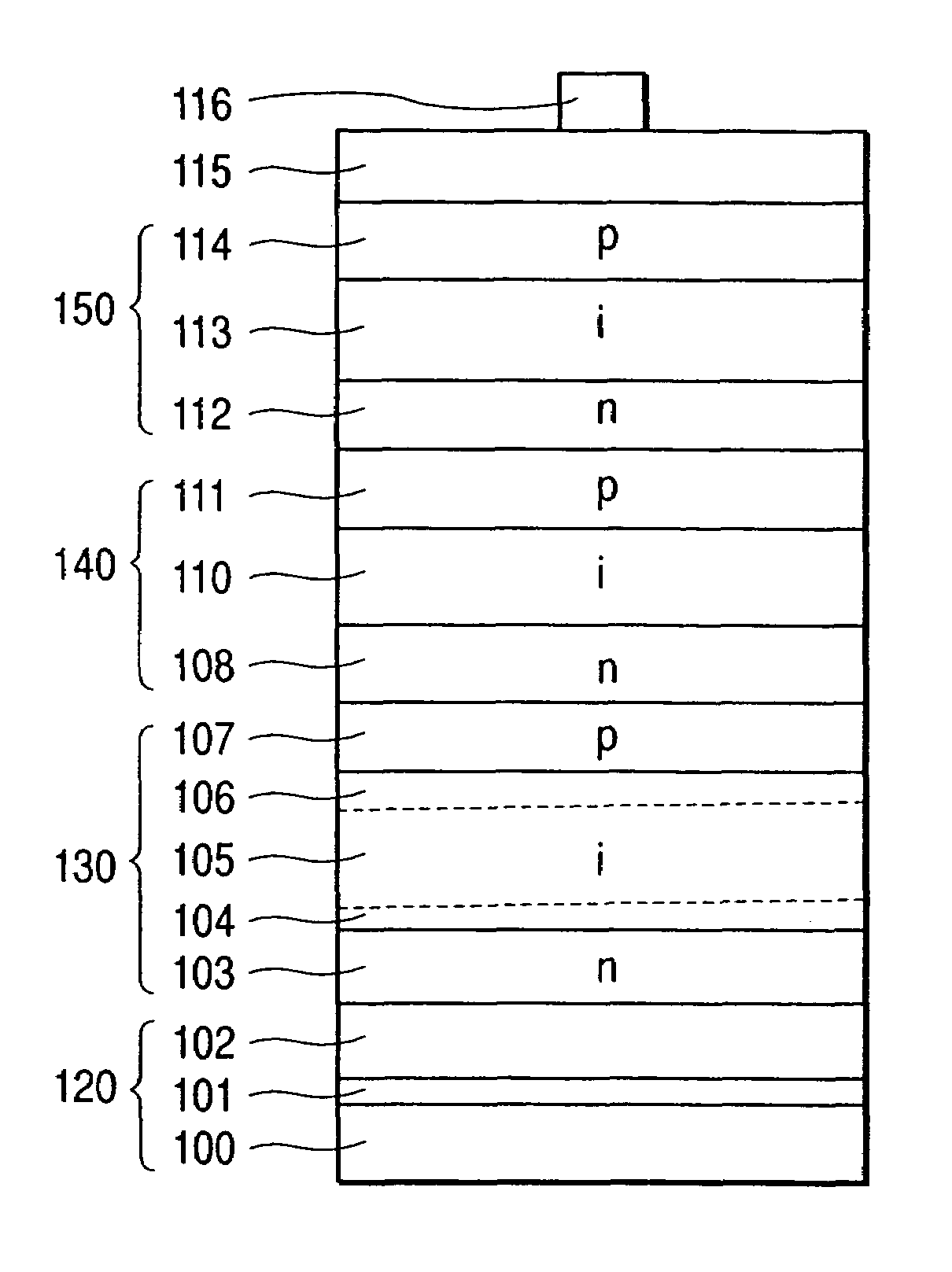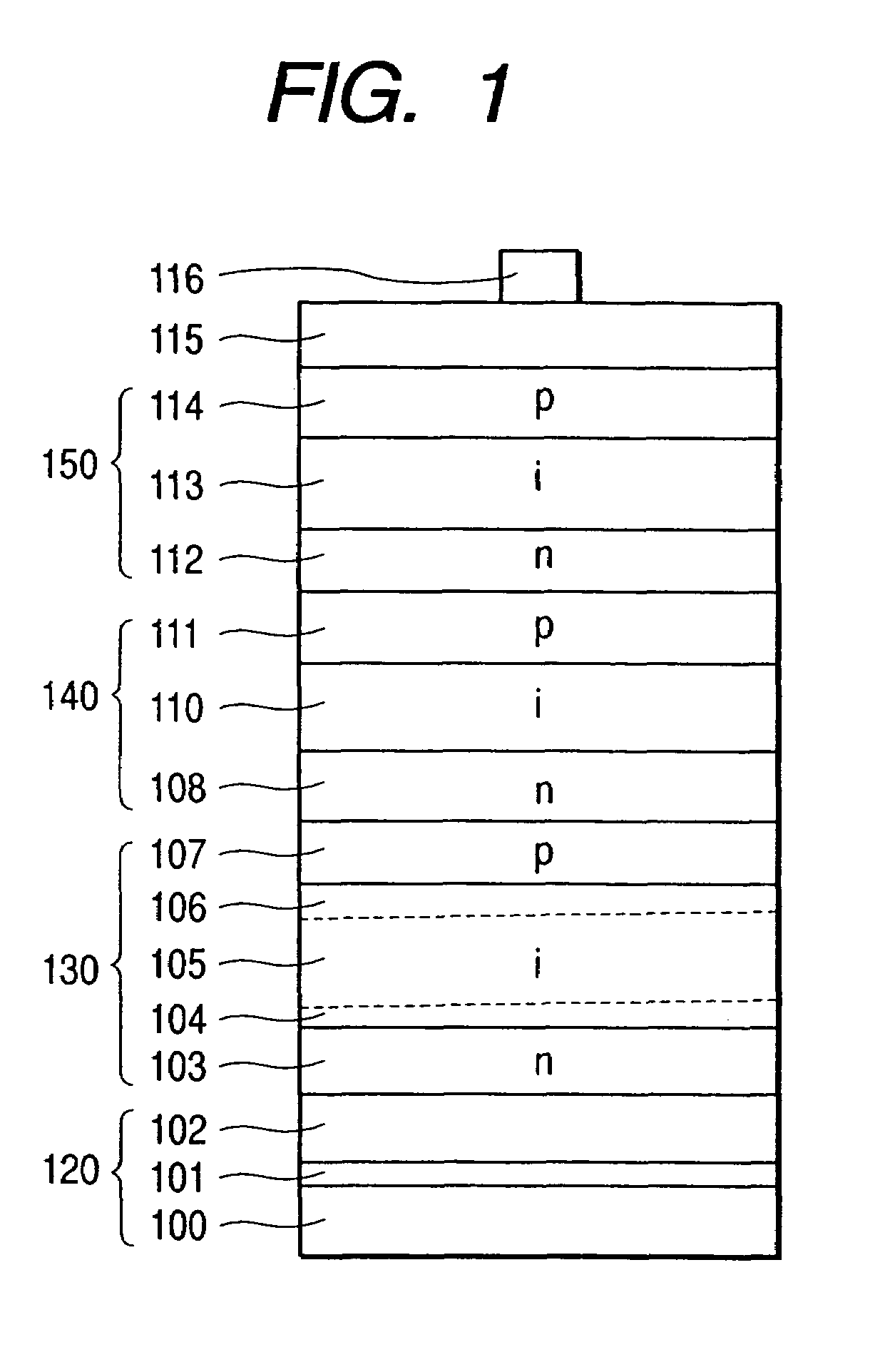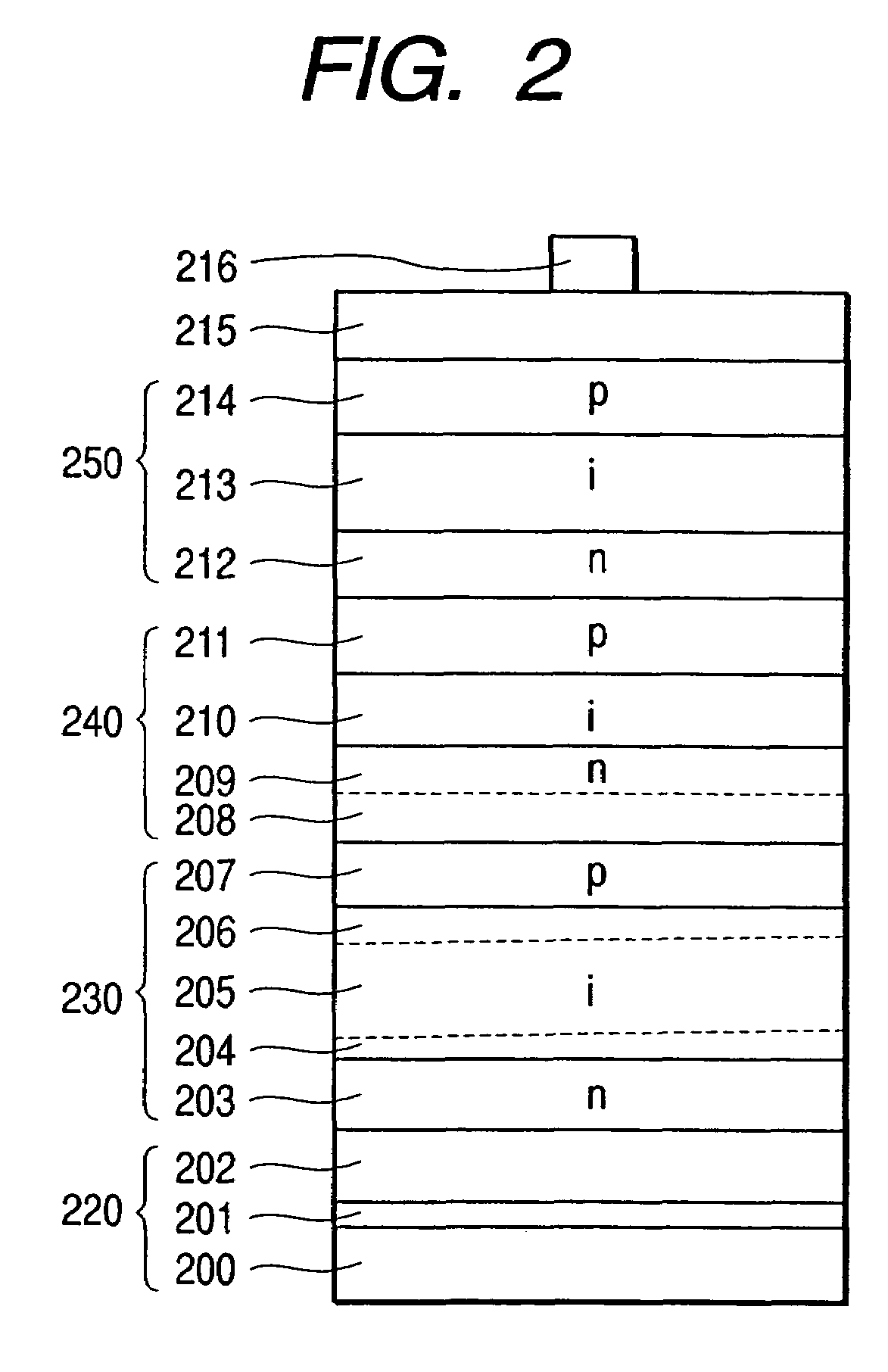Stacked photovoltaic device
a photovoltaic device and stacked technology, applied in the field of stacked photovoltaic devices, can solve the problems of ineffective use of short wavelength components, high production cost, indirect transition still remains, etc., and achieve high photoelectric conversion efficiency, high reliability, and practical and low cost.
- Summary
- Abstract
- Description
- Claims
- Application Information
AI Technical Summary
Benefits of technology
Problems solved by technology
Method used
Image
Examples
example 1
[0153]The stacked photovoltaic device as shown in FIG. 1 was produced using a deposition system shown in FIG. 4. A deposition system 400 can carry out all of MWPCVD (microwave plasma CVD), VHFPCVD (VHF plasma CVD) and RFPCVD (radio frequency plasma CVD). Using this deposition system 400, the respective semiconductor layers were formed on a substrate 490 having light reflecting layers 101 and 102.
[0154]Material gas cylinders (not shown) are connected through gas feed pipes to the deposition system. The material gas cylinders contain all purified gases in an ultra-high purity, and an SiH4 gas cylinder, a CH4 gas cylinder, a GeH4 gas cylinder, an Si2H6 gas cylinder, a PH3 / H2 (dilution: 2.0%) gas cylinder, a B2H6 / H2 (dilution: 2.0%) gas cylinder, an H2 gas cylinder, an He gas cylinder, an SiCl2H2 gas cylinder and an SiH4 / H2 (dilution: 2%) gas cylinder were connected.
[0155]Next, the substrate 490, on which a metal layer 101 and a transparent conductive layer 102 had been formed, was plac...
example 2
[0200]A photovoltaic device was produced in the same manner as in Example 1 except that the third p-i-n i-type layer 105 comprised of μc-Si was formed using VHF waves of 0.1 GHz in place of the microwaves.
[0201]The substrate heater 411 was set so as to bring the temperature of the substrate 490 to 330° C. At the time the substrate was heated, the valves 461, 451, 450, 463 and 453 were opened slowly to flow SiH4 gas and H2 gas into the i-type layer deposition chamber 418 through the gas feed pipe 449.
[0202]Here, SiH4 gas flow rate and H2 gas flow rate were controlled by means of the corresponding mass flow controllers 456 and 458 so as to be 60 sccm and 2,400 sccm, respectively. The pressure inside the i-type layer deposition chamber 418 was controlled so as to be 0.2 Torr by adjusting the opening of the conductance valve (not shown).
[0203]Next, the power of a VHF power source (not shown; 0.1 GHz) was set to 0.15 W / cm3 and was applied to the bias rod 428 to cause glow discharge. Thus...
example 3
[0211]In Example 1, to form the second p-i-n i-type layer 110 comprised of μc-Si, SiH4 gas flow rate and H2 gas flow rate were controlled by means of the corresponding mass flow controllers 456 and 458 so as to be 70 sccm and 2,100 sccm, respectively. The pressure inside the i-type layer deposition chamber 418 was controlled so as to be 0.05 Torr by adjusting the opening of the conductance valve (not shown).
[0212]Next, the power of the RF power source 424 was set to 0.15 W / cm3 and was applied to the bias rod 428. Thereafter, the power of a VHF power source (not shown; 0.5 GHz) was set to 0.12 W / cm3, and VHF power was fed into the i-type layer deposition chamber 418 through the bias rod 428 to cause glow discharge. Thus, the second p-i-n i-type layer started being formed on the second p-i-n RF n-type layer, and an i-type with a layer thickness of 1.0 μm was formed, whereupon the glow discharge was stopped and the output from the bias power source 424 was stopped to complete the forma...
PUM
 Login to View More
Login to View More Abstract
Description
Claims
Application Information
 Login to View More
Login to View More - R&D
- Intellectual Property
- Life Sciences
- Materials
- Tech Scout
- Unparalleled Data Quality
- Higher Quality Content
- 60% Fewer Hallucinations
Browse by: Latest US Patents, China's latest patents, Technical Efficacy Thesaurus, Application Domain, Technology Topic, Popular Technical Reports.
© 2025 PatSnap. All rights reserved.Legal|Privacy policy|Modern Slavery Act Transparency Statement|Sitemap|About US| Contact US: help@patsnap.com



